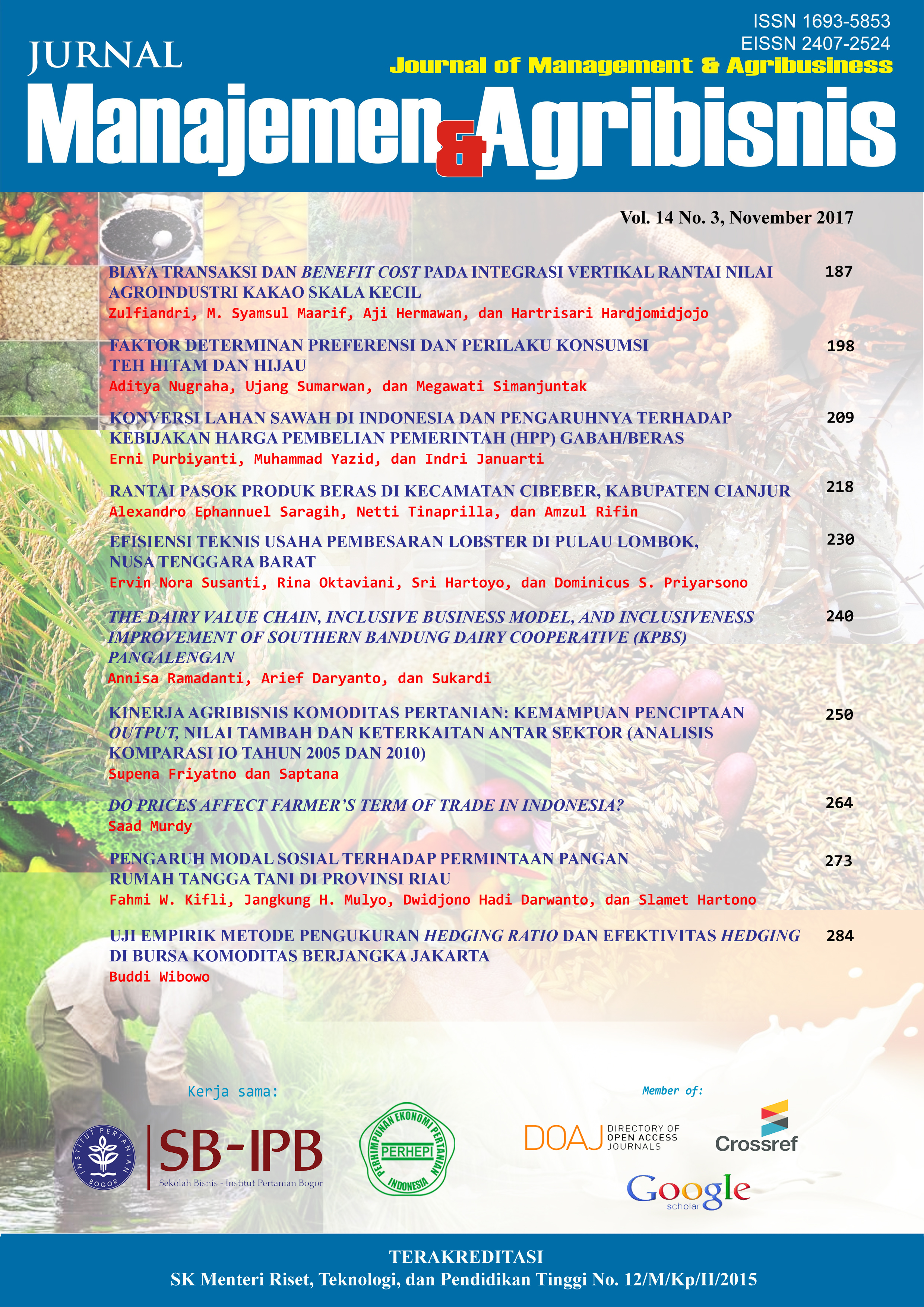Konversi Lahan Sawah di Indonesia dan Pengaruhnya Terhadap Kebijakan Harga Pembelian Pemerintah (HPP) Gabah/Beras
Abstract
Conversion of paddy fields in Indonesia is quite alarming, reaching an average area of 10 thousand hectares per year. Various regulations have been created and assigned; however, they are considered not to effectively reduce the rate of conversion of the existing paddy fields. The paddy field conversion has brought about negative impacts on the national food security. To overcome these, besides issuing the government regulations to reduce the rate of paddy field conversion, the government has also set a number of policies to boost rice production and to improve the welfare of farmers. One policy is the pricing policy by the Government Purchase Price (grains/rice). This study aimed to analyze the paddy field conversion in Indonesia and its effect on the Government Purchase Price (grains/rice). The data used in this research were the dynamic time series data from the years of 1990-2010, with the consideration of the upward trend in paddy field conversion in Indonesia. The models built an econometric model of simultaneous equations consisted of 41 equations (19 structural equations and 22 identity equations) or in other words, the model consisted of 41 endogenous variables. The results showed that the real prices (grains/rice) of the government purchases have inelastic responses to the changes of all explanatory variables in the short and long terms. The conversion of paddy fields in Indonesia has not only reduced the existing rice production capacity but also has affected the government purchase price policy (grains/rice). The government requires to implement the multi qualities of the government purchasing pries (HPP) for both grains and rice.
Keywords: rice, grain, government purchase price, paddy field conversion
Authors
Authors who publish with this journal agree to the following terms:
- Authors retain copyright and grant the journal right of first publication with the work simultaneously licensed under a Creative Commons Attribution License that allows others to share the work with an acknowledgement of the work's authorship and initial publication in this journal.
- Authors are able to enter into separate, additional contractual arrangements for the non-exclusive distribution of the journal's published version of the work (e.g., post it to an institutional repository or publish it in a book), with an acknowledgement of its initial publication in this journal.
- Authors are permitted and encouraged to post their work online (e.g., in institutional repositories or on their website) prior to and during the submission process, as it can lead to productive exchanges, as well as earlier and greater citation of published work (See The Effect of Open Access).

